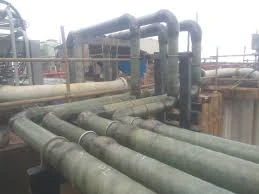
-
 Afrikaans
Afrikaans -
 Albanian
Albanian -
 Amharic
Amharic -
 Arabic
Arabic -
 Armenian
Armenian -
 Azerbaijani
Azerbaijani -
 Basque
Basque -
 Belarusian
Belarusian -
 Bengali
Bengali -
 Bosnian
Bosnian -
 Bulgarian
Bulgarian -
 Catalan
Catalan -
 Cebuano
Cebuano -
 China
China -
 China (Taiwan)
China (Taiwan) -
 Corsican
Corsican -
 Croatian
Croatian -
 Czech
Czech -
 Danish
Danish -
 Dutch
Dutch -
 English
English -
 Esperanto
Esperanto -
 Estonian
Estonian -
 Finnish
Finnish -
 French
French -
 Frisian
Frisian -
 Galician
Galician -
 Georgian
Georgian -
 German
German -
 Greek
Greek -
 Gujarati
Gujarati -
 Haitian Creole
Haitian Creole -
 hausa
hausa -
 hawaiian
hawaiian -
 Hebrew
Hebrew -
 Hindi
Hindi -
 Miao
Miao -
 Hungarian
Hungarian -
 Icelandic
Icelandic -
 igbo
igbo -
 Indonesian
Indonesian -
 irish
irish -
 Italian
Italian -
 Japanese
Japanese -
 Javanese
Javanese -
 Kannada
Kannada -
 kazakh
kazakh -
 Khmer
Khmer -
 Rwandese
Rwandese -
 Korean
Korean -
 Kurdish
Kurdish -
 Kyrgyz
Kyrgyz -
 Lao
Lao -
 Latin
Latin -
 Latvian
Latvian -
 Lithuanian
Lithuanian -
 Luxembourgish
Luxembourgish -
 Macedonian
Macedonian -
 Malgashi
Malgashi -
 Malay
Malay -
 Malayalam
Malayalam -
 Maltese
Maltese -
 Maori
Maori -
 Marathi
Marathi -
 Mongolian
Mongolian -
 Myanmar
Myanmar -
 Nepali
Nepali -
 Norwegian
Norwegian -
 Norwegian
Norwegian -
 Occitan
Occitan -
 Pashto
Pashto -
 Persian
Persian -
 Polish
Polish -
 Portuguese
Portuguese -
 Punjabi
Punjabi -
 Romanian
Romanian -
 Russian
Russian -
 Samoan
Samoan -
 Scottish Gaelic
Scottish Gaelic -
 Serbian
Serbian -
 Sesotho
Sesotho -
 Shona
Shona -
 Sindhi
Sindhi -
 Sinhala
Sinhala -
 Slovak
Slovak -
 Slovenian
Slovenian -
 Somali
Somali -
 Spanish
Spanish -
 Sundanese
Sundanese -
 Swahili
Swahili -
 Swedish
Swedish -
 Tagalog
Tagalog -
 Tajik
Tajik -
 Tamil
Tamil -
 Tatar
Tatar -
 Telugu
Telugu -
 Thai
Thai -
 Turkish
Turkish -
 Turkmen
Turkmen -
 Ukrainian
Ukrainian -
 Urdu
Urdu -
 Uighur
Uighur -
 Uzbek
Uzbek -
 Vietnamese
Vietnamese -
 Welsh
Welsh -
 Bantu
Bantu -
 Yiddish
Yiddish -
 Yoruba
Yoruba -
 Zulu
Zulu
Exploring the Benefits of FRP Materials in Automobile Body Construction
The Evolution and Impact of FRP in Car Body Design
In the ever-evolving automotive industry, materials play a crucial role in determining a vehicle's performance, efficiency, and sustainability. One such material that has gained considerable attention in recent years is Fiber Reinforced Polymer (FRP). This innovative composite material is revolutionizing car body design due to its remarkable properties and unique advantages.
FRP consists of a polymer matrix reinforced with fibers, typically made from materials such as glass or carbon. The combination results in a lightweight yet highly durable material that offers significant advantages over traditional metal bodies. The automotive industry has been embracing FRP for car bodies, not only for its performance characteristics but also for its potential to reduce environmental impact.
The Evolution and Impact of FRP in Car Body Design
Furthermore, FRP materials are highly resistant to corrosion and environmental degradation. Unlike conventional metals, which can rust and degrade over time, FRP remains stable under varying weather conditions. This resilience translates into lower maintenance costs and a longer lifespan for vehicles, appealing to both manufacturers and consumers. The ability to maintain structural integrity over time also enhances the safety features of vehicles, as the material can endure impacts and maintain its form.
frp car body

In addition to performance and practicality, FRP offers significant design freedom. The material can be molded into complex shapes and intricate designs, enabling manufacturers to experiment with aesthetics and functionality. This creativity has led to the development of innovative vehicle designs that were once thought impossible with traditional materials. From curvilinear forms to futuristic styles, FRP allows automotive designers to push the boundaries of creativity, leading to more visually appealing models that attract modern consumers.
Moreover, the production process of FRP can be less energy-intensive compared to conventional metal forming processes. This advantage is particularly important as the industry continues to seek ways to minimize its carbon footprint during manufacturing. Interestingly, the flexibility of FRP also facilitates faster manufacturing times, as components can be produced quickly using techniques such as resin transfer molding or vacuum infusion.
However, the integration of FRP into car body design does present certain challenges. One major concern is the recycling and disposal of FRP, as the composites are less recyclable than metals. The automotive industry must innovate ways to recycle these materials effectively to minimize waste and ensure a sustainable lifecycle for products manufactured using FRP. Additionally, while FRP provides excellent mechanical properties, it can be more expensive than traditional materials, which may pose challenges for widespread adoption, especially among budget-conscious manufacturers.
In response to these challenges, ongoing research and development are focusing on improving FRP formulations and processes. Advancements in resin technology, fiber materials, and recycling methods hold the potential to address some of the existing limitations. As understanding and technology around FRP develop, it is likely that its application in car body design will become increasingly mainstream.
In conclusion, Fiber Reinforced Polymer is setting the stage for a new era in automotive engineering. Its lightweight, durable, and corrosion-resistant properties make it an excellent choice for modern car bodies, promising enhanced performance, sustainability, and design flexibility. Although challenges remain, the potential benefits of FRP are immense, and its continued development will undoubtedly play a pivotal role in shaping the vehicles of the future. As the automotive sector adopts more sustainable practices, FRP materials may well become the cornerstone of car design, marking a significant shift in how vehicles are constructed and perceived in the years to come.









